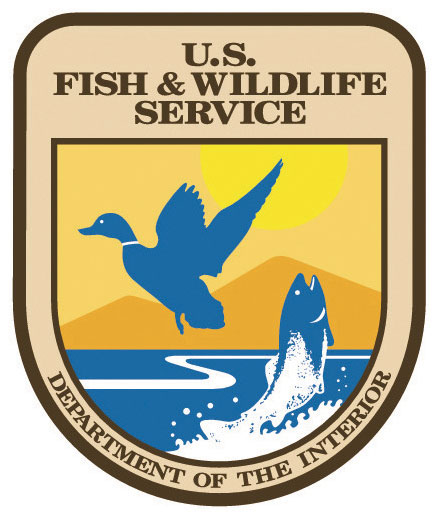Land Snail Ecology
Reproduction & Life History
Lift up a chunk of wood from the forest floor and a world of miniature organisms appears—camouflaged camel crickets, armored beetle larvae, fierce-looking pseudoscorpions, spiders, springtails, and snails. Here and there you will see tiny whitish balls, mysteriously translucent.These are land snail eggs, laid in a damp and protected place where they will develop and hatch in a few weeks. They come in different sizes, at most a few millimeters, and may be clustered or single, rubbery or hard, depending upon their species.
The tiny hatching snail that emerges will be almost completely transparent, and if a shelled species, will have a fragile transparent shell—the “nuclear whorl” of an adult’s shell.
Land snail eggs usually result from sexual reproduction, in which genetic material from two individuals is combined. The genetic material in eggs and sperm are brought together by internal fertilization, which involves copulation, though it is much different from that in mammals.
Almost all Pennsylvania land snails are naturally hermaphroditic, that is, they have both male and female reproductive organs. That means that both mating snails may produce sperm and lay eggs. In Pennsylvania the only exceptions to this generality are the cherrystone drop (Hendersonia occulta), and the slender walker (Pomatiopsis lapidaria) in which individuals are male or female.
In the hermaphroditic land snails a single gonad produces both egg and sperm. An in-depth review of land snail reproductive organs is by Gomez (in Barker, 2001). Sperm are often put into a package called a spermatophore, which is transferred by the donor’s penis into the receiver’s vagina. The penis and vagina share a common opening called the atrium, whose opening can be seen as the small “genital pore” on the right side of the animal’s head, usually behind the right eye tentacle. Once inside the receiving animal, the spermatophore releases the sperm, then sperm and eggs meet in the fertilization chamber, where genetic material is combined.
Self-fertilization is possible for some Pennsylvania land snails such as the whitelip (Neohelix albolabris; McCracken and Brussard, 1980), the black gloss (Zonitoides nitidus; Jordaens et al., 1998), and others, an apparent advantage if populations are small or scattered.
Aside from the reproductive organs already mentioned, several other organs play important roles in reproduction, again, well-covered by Gomez in Barker, 2001, and there are interesting variations in reproductive anatomy according to family and species. For example, land snails of some families, including the belly-tooth snails (Gastrodontidae) such as the quick gloss (Zonitoides arboreus), have a “dart sac” containing a “dart.” The dart is a small, sharp spear of calcium carbonate that is rapidly injected into the flesh of a partner before mating. The dart is believed to inject reproductive hormones that increase the shooter’s odds of paternity (Davison et al., 2005; Koene and Chase, 1998; Schilthuisen, 2005).
After fertilization, the egg passes down the spermoviduct, which coats the egg with jelly-like albumen to feed the developing snail and a protective outer coating. Then the egg is passed out of the snail’s body, or oviposited, in a damp area, sometimes in a hole dug by the parent.
Laying pattern varies by species, for example, the quick gloss (Zonitoides arboreus) lays eggs singly while the dusky arion (Arion subfuscus) lays eggs in clusters. Adults may lay from one to dozens of eggs, but details about oviposition are almost completely unknown for Pennsylvania species. An exception is the flamed disk (Anguispira alternata) for which Elwell and Ulmer (1971) provide many details from a captive colony.
The flamed disk burrows into soil, gravel, or decayed wood and lays eggs 2-3mm in diameter at a depth of 1.5 to 2.5cm. The number of eggs laid by an individual varied from 2 to 25, but may have been as high as 40. Eggs that were left where they were laid hatched in 30-45 days, with almost all hatching. Cannibalism of eggs by adults was observed by Elwell and Ulmer, and is known to occur in other land snails as well.
Mating behavior between land snails begins when two adults of the same species find each other at the right time of year or in the proper conditions. Land snails have limited vision and are often in dark habitats, but they are well-adapted to receive chemical signals and feel objects. The four antennae on a snail’s head are sensitive chemoreceptors (like the inside of your nose) and a snail’s head and foot are covered with touch sensors.
It is unclear if land snails are able to “smell” other snails from a distance, though they can be attracted to food items in this way. Once snails are in an area with other snails, they are able to detect and follow another’s slime trail.
When two potential mates meet, they exhibit a variety of crawling and touching courtship behaviors, which may take hours. This is when the dart is employed, for those species that have them, and the genital pore may become more prominent. For copulation, most species orient in opposing directions with the right sides of their heads together, in order to bring the genital pores into close proximity.
In land snails, reproduction is linked to life history, which may be separated into two primary strategies – semelparous, in which adults reproduce once and then die, and iteroparous, in which adults reproduce then survive to reproduce again (e.g., Heller, 2001). Of the Pennsylvania species that are semelparous, some of the most noticeable are the ambersnails (Succineidae), which may reach high densities along stream floodplains or damp fields, reproduce and then begin quickly dying off.
In temperate climates such as Pennsylvania’s, reproduction of some snails appears to be linked to the seasonal rhythm or favorable weather, with much reproductive activity in early summer, such as that of the button snails (Mesomphix spp.) Snails may also have long periods of inactivity during unfavorable weather.
If you are hunting land snails in Pennsylvania during the late fall or winter, or during a dry summer spell, you may come across a land snail shell with a sealed-up aperture and a live snail still inside. To conserve water and energy, land snails will become completely inactive. The seal on the shell is a layer of thick, dried mucus called an epiphragm. It is secreted by the snail and usually has a tiny hole that allows some air exchange. One Pennsylvania snail, the flamed disk, is able to form an epiphragm in as little as five minutes (Elwell and Ulmer, 1971).
During dry summer periods, large slugs will aestivate deep within rotten logs, and shelled snails may be adhered by their epiphragm to the underside of a stick or rock. In winter, shelled snails may develop a thicker epiphragm, and will be said to be hibernating (although it is not hibernation as in mammals). These shells will often be in the leaf litter or under cover, with their sealed aperture facing upward. In fact, over the course of a year some land snails may be active for only a handful of days when temperature and moisture conditions are most favorable.
Life span of land snails can be brief, a few weeks or months, as in the Succineids mentioned above, or several years, as in some of the larger Polygyrid and Endodontid snails. One large Pennsylvania species, the broad-banded forestsnail (Allogona profunda), was found in an Illinois study to mature in one year and live up to four years (Blinn, 1963), and some species can live perhaps twice as long.
If you look at an adult shell of some of the larger land snail species you may see that one or two areas of growth rings are more pronounced, indicating periods when growth was interrupted during winter hibernation. From these “rings” we can deduce that these animals took two or three winters to mature.
Ken Hotopp and Tim Pearce 5/2/06



Development of this site was supported by the generous contributions of Pennsylvanians to the Wild Resource Conservation Fund, and by the Virginia Dept. of Game and Inland Fisheries with a State Wildlife Grant from the US Fish & Wildlife Service.
